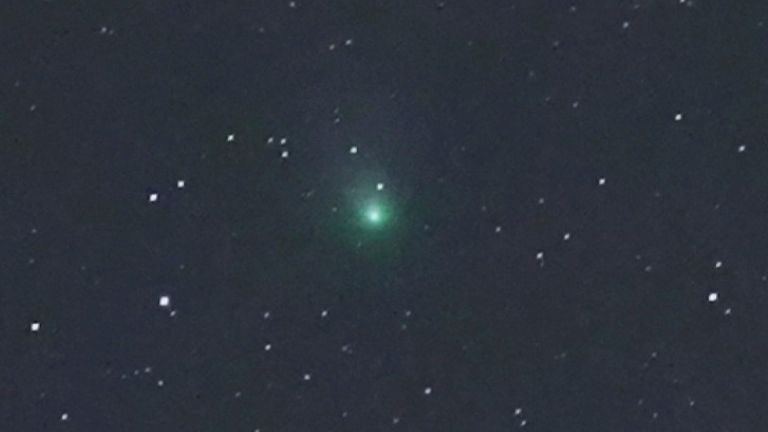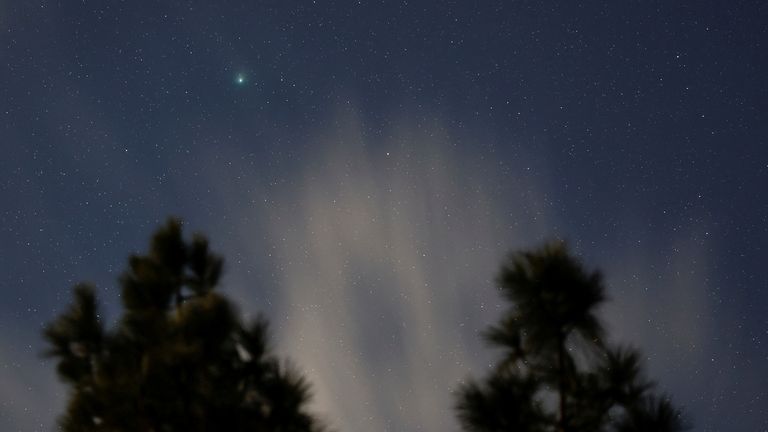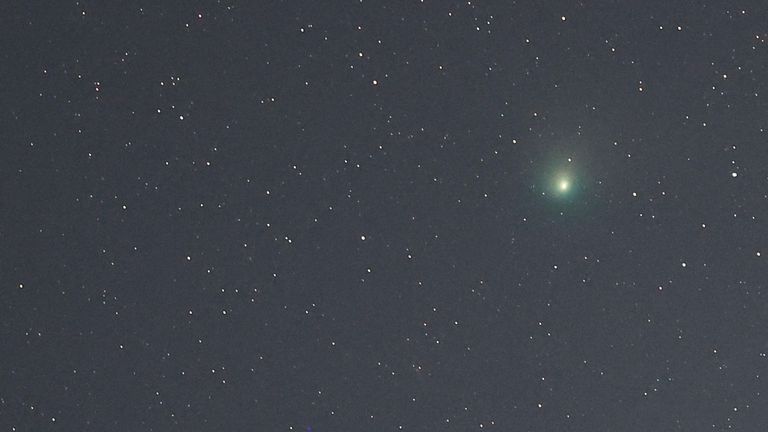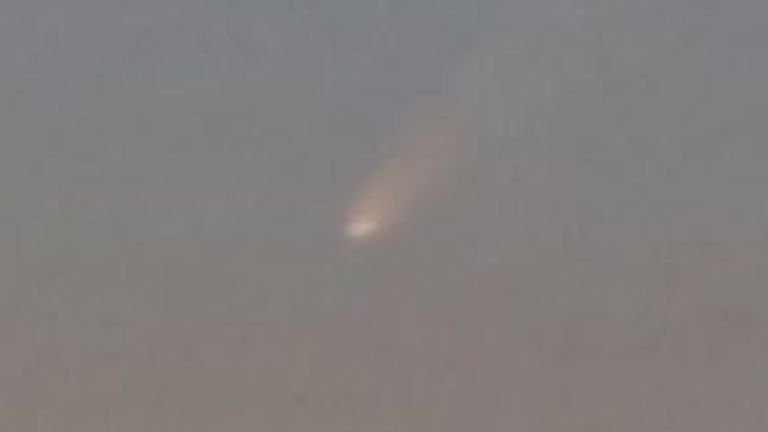To be fair, this is an opportunity that doesn’t come along very often.
For the first time in about 50,000 years, A green comet flies past Earth this month – Your best chance to discover it is now.
Comet C/2022 E3 (ZTF) is already visible through binoculars and telescopes, but on Wednesday and Thursday nights it looked so bright you could see it with the naked eye.
Here’s how to make sure you have a spectacular view.
When should you keep watch?
The first two nights of February have been earmarked as the best times to see the comet because that’s when it’s closest to Earth — just 28 million miles away.
This means it can be seen from both the northern and southern hemispheres.
Astronomer Dr Greg Brown of the Royal Observatory Greenwich told Sky News Brits should wait until after midnight for the best view.
“In northern latitudes, such as the UK, this part of the sky at this time is below the horizon in the evening, so it’s best to wait until after midnight when the sky is much higher,” he said.
“The comet is at its brightest right now, and will rapidly decrease in brightness as it starts to move away from us.”
Where should you look?
The comet passes through the constellations Corona Borealis, Boötes, Draco, and Ursa Minor on its way to the constellation Cameloparda the Giraffe.
But you’re probably best off looking roughly halfway between Ursa Major and Ursa Minor, the two bears, Dr. Brown said.
If this has you scratching your head, you might want to consider using a stargazing app like Night Sky or SkyView to help locate constellations.
By pointing your smartphone’s camera at the night sky, such apps will use augmented reality to tell you which constellation you’re looking at and give you tips on how to spot comets.
As for your location on the ground, Dr. Brown recommends a spot with “minimal light pollution.”
He added: “Other than that, as long as your skies are clear and you can see the part of the sky where the comet is, you should have a good chance.”
I don’t need any extra equipment?
C/2022 E3 (ZTF) is just below the brightness that is almost guaranteed to be visible to the naked eye, but it will most likely be.
But Dr. Brown says a decent pair of binoculars or a small telescope will certainly make a difference.
Sky News reader John Short took the photo at the top of this article using a Vaonis Vespera smart telescope.
As for those aforementioned apps, some of them aren’t regularly updated to include newly discovered objects, such as C/2022 E3 (ZTF), but the main apps at the top of your phone’s app store search results should be.
Either way, they can help you find those constellations if you’re not sure.
Dr. Brown also recommends trying web-based resources such as The Sky Live, which keeps track of new and popular interstellar objects and can help you plan your observations.
What if I read this on a Friday – am I out of luck?
unnecessary!
The comet will be visible until Wednesday night and after Thursday — all you need is the equipment.
“For a few weeks, it should still be a decent sight,” Dr Brown said.
“While it will soon cease to be visible through binoculars, a small to medium scope will be required as it recedes.
“It’s also moving across the sky during this time, so be sure to check its location before looking for it.”
More like this:
Hundreds of fireball sightings in UK skies
Meteorite fuels theory of origin of Earth’s oceans
Sorry, I should have asked this sooner… why are comets green?
This icy green comet gets its color due to the reaction between its gas and the sun.
Carbon compounds in this gas from the comet interact with ultraviolet light from the sun, which is why it glows green.
It makes for a striking sight, and its orbital period — how long it takes to orbit the Sun — means it last lit up the night sky during the Stone Age.
So if you’re going to check it out, good luck.



